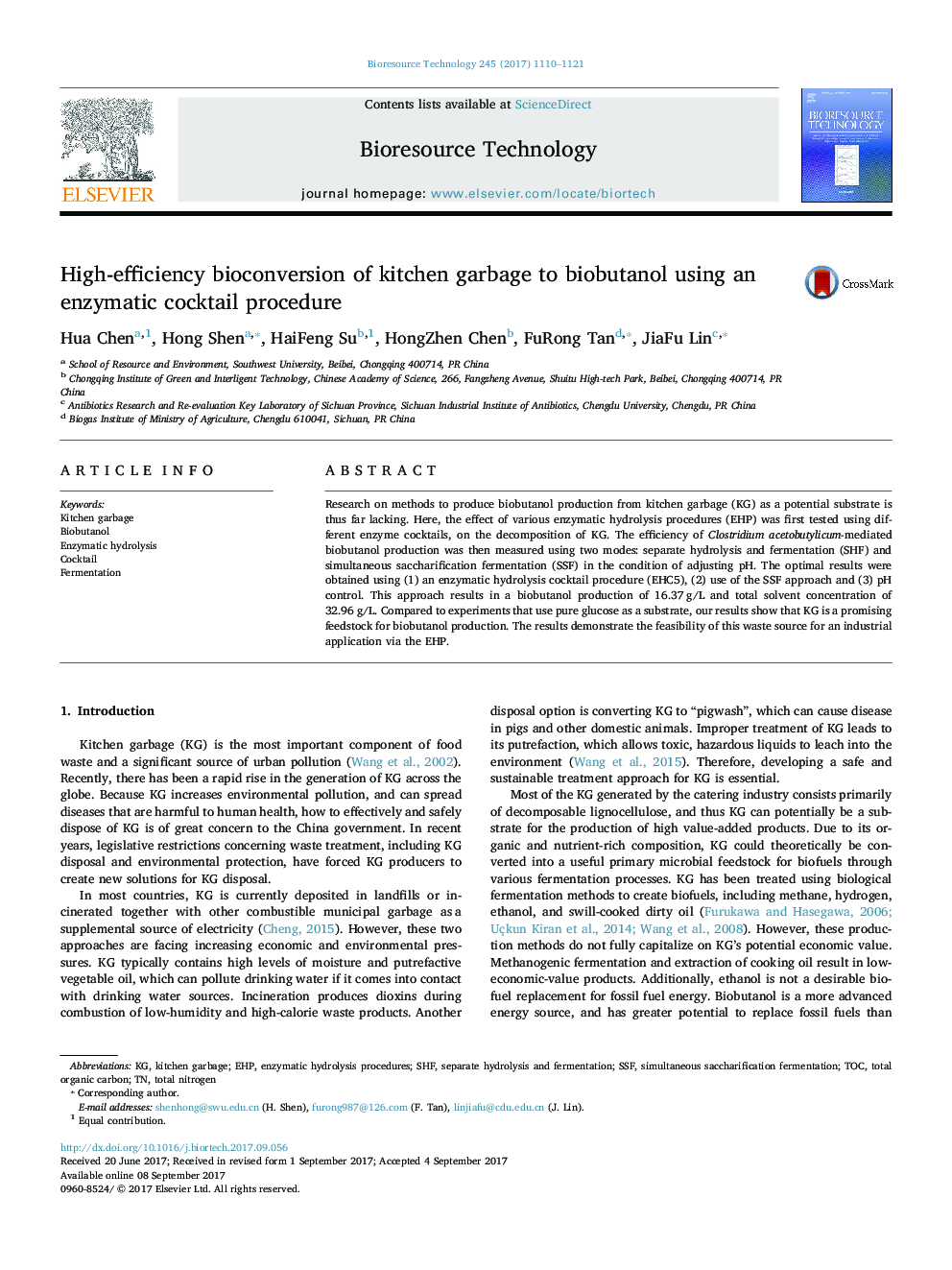| Article ID | Journal | Published Year | Pages | File Type |
|---|---|---|---|---|
| 4996838 | Bioresource Technology | 2017 | 12 Pages |
â¢For the first time, using kitchen garbage to producing biobutanol.â¢A high-efficiency hydrolysis process: EHC5 was designed with cocktails method.â¢Improving biobutanol production using SHF and SSF via pH controlling.â¢KG is a promising feedstock for an industrial application.
Research on methods to produce biobutanol production from kitchen garbage (KG) as a potential substrate is thus far lacking. Here, the effect of various enzymatic hydrolysis procedures (EHP) was first tested using different enzyme cocktails, on the decomposition of KG. The efficiency of Clostridium acetobutylicum-mediated biobutanol production was then measured using two modes: separate hydrolysis and fermentation (SHF) and simultaneous saccharification fermentation (SSF) in the condition of adjusting pH. The optimal results were obtained using (1) an enzymatic hydrolysis cocktail procedure (EHC5), (2) use of the SSF approach and (3) pH control. This approach results in a biobutanol production of 16.37 g/L and total solvent concentration of 32.96 g/L. Compared to experiments that use pure glucose as a substrate, our results show that KG is a promising feedstock for biobutanol production. The results demonstrate the feasibility of this waste source for an industrial application via the EHP.
